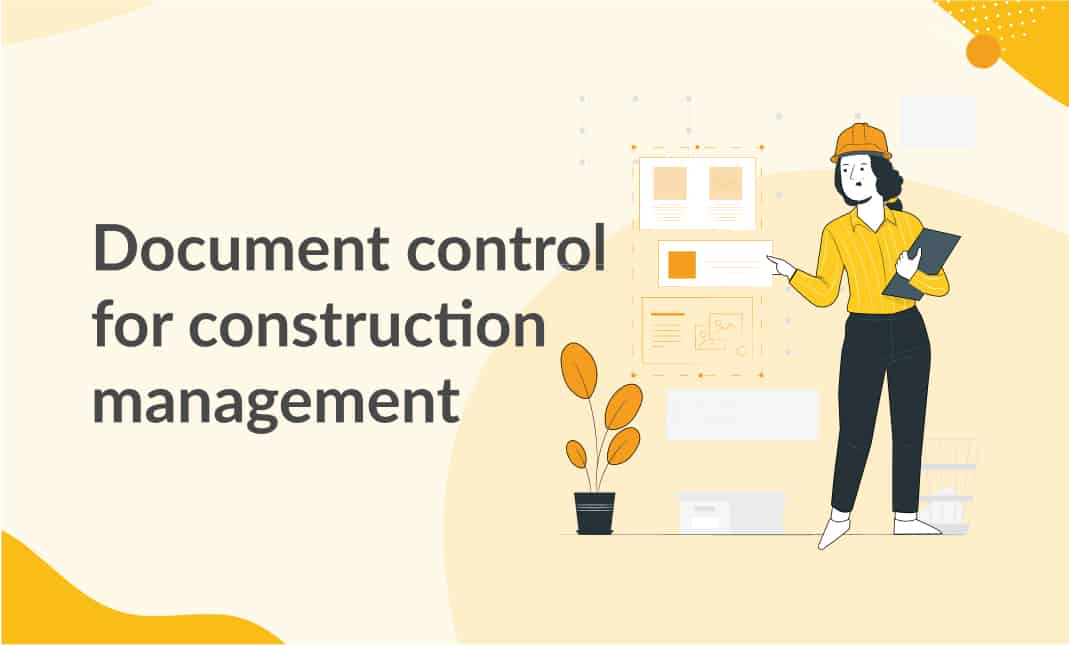Efficient Construction Document Management Solutions for Every Task
Efficient Construction Document Management Solutions for Every Task
Blog Article
Optimizing Project Collaboration: Architect's Ideal Practices in Construction Record Administration
In the complex realm of architectural projects, the reliable management of building papers stands as a cornerstone for success. Architects, with their thorough attention to information and innovative style services, are entrusted with managing a harmony of stakeholders, timelines, and resources. Nonetheless, among this complexity exists an essential concern: exactly how can designers simplify collaboration procedures to boost task results? By exploring key approaches such as leveraging cloud-based platforms, establishing durable interaction methods, and making certain information safety and security, architects can boost their file management techniques to brand-new heights.
Leveraging Cloud-Based Platforms
Leveraging cloud-based systems is an essential method for contemporary architects in optimizing construction document administration processes. By transitioning from standard paper-based systems to shadow solutions, designers can enhance cooperation, enhance document accessibility, and boost total project efficiency. Cloud-based systems provide engineers the capacity to store, share, and update building documents in real-time, ensuring that all group participants have access to one of the most present information despite their area. This ease of access advertises smooth interaction and coordination among job stakeholders, leading to fewer mistakes and hold-ups in the building and construction process.
Furthermore, cloud-based systems give a safe atmosphere for storing delicate job details, offering encryption, regular backups, and user authorization setups to protect information honesty. Engineers can likewise take advantage of the scalability of cloud solutions, permitting them to readjust storage capability and performance based on task needs. Overall, leveraging cloud-based systems equips engineers to maximize their construction document administration processes, driving higher collaboration, effectiveness, and success in their tasks.
Carrying Out Variation Control Solution
Having developed the advantages of cloud-based platforms in building paper monitoring, engineers can now enhance their paper control processes by applying Version Control Solution. Version Control Systems (VCS) are necessary devices that track modifications in files, making certain that staff member are always collaborating with the most up to date and most exact details. By executing VCS, architects can maintain a centralized database where all task records are stored, making it possible for smooth cooperation while minimizing the threat of errors and version disputes.
This function is especially important in building jobs where style models and adjustments are usual. This transparency not only boosts liability yet additionally aids in solving conflicts or disparities that might arise during the job lifecycle.
Developing Interaction Protocols
To make sure efficient and reliable task sychronisation, architects need to establish clear and durable interaction methods within their building and construction document management procedures. This platform could be a task administration software application, email strings, or cloud-based storage services.
In addition, interaction methods should likewise consist of guidelines on exactly how to handle problems, change orders, and urgent issues that may occur throughout the task lifecycle. Establishing an organized method to communication makes sure that all stakeholders are on the exact same page, advertises openness, and ultimately contributes to the successful conclusion of the construction job.
Using BIM Software for Control
BIM software application plays a critical duty in enhancing control amongst project staff member in the building and construction sector. Structure Details Modeling (BIM) promotes cooperation by providing a central platform where designers, engineers, service providers, and other stakeholders can interact in a coordinated way. Through BIM software application, project participants can access and update a common design which contains detailed details regarding the building layout, building components, and job routines.

Additionally, BIM software program enables real-time cooperation and interaction amongst team members, despite their physical place. With cloud-based BIM platforms, job stakeholders can access the most recent task info, track changes, and make educated choices without delay. In general, leveraging BIM software application for control improves job performance, efficiency, and ultimately causes effective project end results.
Ensuring Information Safety and Compliance
In read more the world of building and construction file administration, safeguarding information honesty and ensuring regulative compliance are paramount considerations for designers and other task home stakeholders. Engineers must implement durable safety procedures to safeguard sensitive job information from unauthorized gain access to or violations.

Conclusion
In final thought, architects can optimize project cooperation in building and construction file administration by leveraging cloud-based systems, executing variation control systems, developing interaction methods, using BIM software for sychronisation, and guaranteeing data protection and compliance. These ideal techniques aid improve the building procedure, enhance communication among project stakeholders, and boost performance in job delivery. By complying with these guidelines, architects can effectively manage construction papers and facilitate successful task end results.
With BIM software program, job individuals can access and update a common model that includes comprehensive information regarding the building layout, construction components, and project routines.
Via cloud-based BIM systems, task stakeholders can access the most recent job information, track changes, and make notified decisions immediately - construction document management. In general, leveraging BIM software for sychronisation enhances job effectiveness, efficiency, and ultimately leads to effective job end results
In internet verdict, designers can maximize task collaboration in building and construction paper administration by leveraging cloud-based systems, carrying out version control systems, developing interaction protocols, utilizing BIM software application for control, and ensuring data security and compliance. These ideal practices help streamline the building process, improve interaction among job stakeholders, and boost efficiency in job delivery.
Report this page